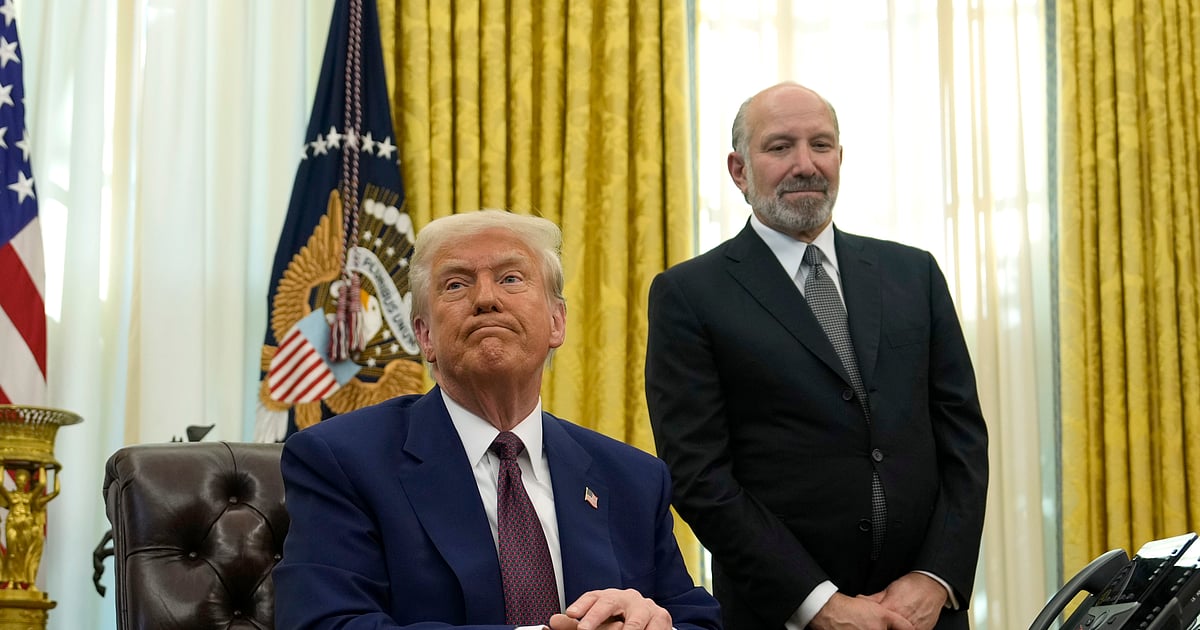As the recent RBI documentary notes, “Countries will rise and fall. Economies will have ups and downs. But gold will always maintain its value.”
Strangely, that’s not exactly the case with the US Treasury.
The world’s largest economy holds the world’s largest gold reserves and on last count, they crossed an estimated $1 trillion in value. Yet, America’s most prized physical asset is unbelievably undervalued on official ledgers at just $11 billion.
Even though the price of gold is witnessing remarkable appreciation, shooting up 54% so far this year to cross $4,000 per ounce, the US’ official value remains fixed at the 1973 Congressional price of $42.22 per ounce, a figure established through the Par Value Modification Act of 1973.
In other words, there’s a significant disparity between the official accounting value and the actual market value and a potential revaluation of gold reserves at current market prices could inject nothing less than $1 trillion into the Treasury’s accounts and address nearly half of the nation’s $1.973 budget deficit. Such a move, though, may cause substantial implications for dollar, inflation, and above all the global monetary, financial and currency markets.
That said, given the US’s rising national debt, which currently stands at a staggering $37 trillion, there’s simply no appetite for further borrowing. At the same time, the government isn’t in a position to rein in spending at will, and it’s this financial quandary that has forced it into a shutdown for nearly two weeks now.
Repricing gold at current market prices is a quick fix to reset finances, as tapping into gold’s undervalued accounting resource could add substantial assets to the national balance sheet without requiring any physical gold sales or additional debt issuance.
In fact, the government wheeled out the idea earlier this year when Treasury Secretary Scott Bessent casually suggested: ‘We’re going to monetise the asset side of the US balance sheet.’ His remark set off a wave of discussions, and though Bessent walked back, the prospect of a $1 trillion windfall continues to linger.
Incidentally, the US Federal Reserve too released a note in August, where it reviewed the rare cases when countries used proceeds from valuation gains on gold and foreign exchange reserves. According to the Fed paper, over the past 30 years, only five economies have done so — Germany, Italy, Lebanon, Curacao and Sint Maarten, and South Africa.
It reasoned that the cash infusion from the revalued gold could be used to pay down debt or finance new spending. It also noted the recent US legislation proposed by Wyoming Senator Cynthia Lummis’s idea of using revaluation proceeds to create a sovereign wealth fund or a strategic bitcoin reserve, which President Donald Trump has talked about.
However, critics see it as a backdoor money printing exercise or, even, as plain old accounting manipulation. They argue that gold revaluation would implicitly devalue the dollar relative to gold, erode confidence in the fiat system, and fuel inflation by enabling unchecked government spending.
There have been precedents where the US’s prior gold revaluation exercises led to a sharp increase in the money supply, fueling inflation and profoundly impacting both domestic and global economies.
For instance, during the Great Depression in 1933, President Franklin D Roosevelt implemented Executive Order 6102, which required Americans to surrender gold bullion to the government, with exceptions for rare and collectable coins. It revalued gold to $35 per ounce in 1934 via the Gold Reserve Act, which created a 69% overnight increase in the government’s gold-based wealth and effectively devalued the dollar by about 41% against gold.
Later in 1971, President Nixon suspended dollar convertibility to gold and in 1973 official gold price was set at $42.22 per ounce, which continues till today.
If the US does revalue gold, it will shake up the global financial system, prompting similar responses from other countries, central banks and market participants. Moreover, even at current market prices, US gold reserves would offset only a portion of the total debt, though it could provide open up fiscal space.
Central banks have used revaluation proceeds to offset operating losses and maintain net profits or minimise reported net losses. In Italy, revaluation proceeds covered a one-off loss, while for Germany, it helped balance budgets without drastic cuts. Likewise, Italy too saw revaluation gains shoring up public finances, while South Africa channelled its proceeds into banking sector reforms amid post-financial crisis recovery as recently as 2010. Lastly, Lebanon used revaluation proceeds to retire existing debt, though its debt-to-GDP ratio continued to rise even after the exercise.
As the Fed note recounts, some central banks value their gold reserves at their historic cost; others report it at current market prices. When central banks report their holdings at current market prices (fair value), the unrealised profits or losses from valuation changes are recorded in revaluation accounts on the liability side of the balance sheet. Practically, the unrealised valuation changes in gold reserves are often reported together with the valuation changes on forex reserves in a single entry on the balance sheet.
When gold is valued at historic cost, it can be revalued at market prices to generate revenues. When all official reserves are valued at market prices, the unrealised valuation changes recorded in the revaluation account can be shifted to other parts of the balance sheet to generate funds.
As for India, the RBI revalues gold daily at 90% of the London Bullion Market Association gold price in US dollars and the Rupee-US dollar market exchange rate. Unrealised valuation gains/losses are accounted for in the Currency and Gold Revaluation Account. RBI holds 879.58 metric tonnes of gold, and as of September, that is worth Rs 10.28 lakh crore.

